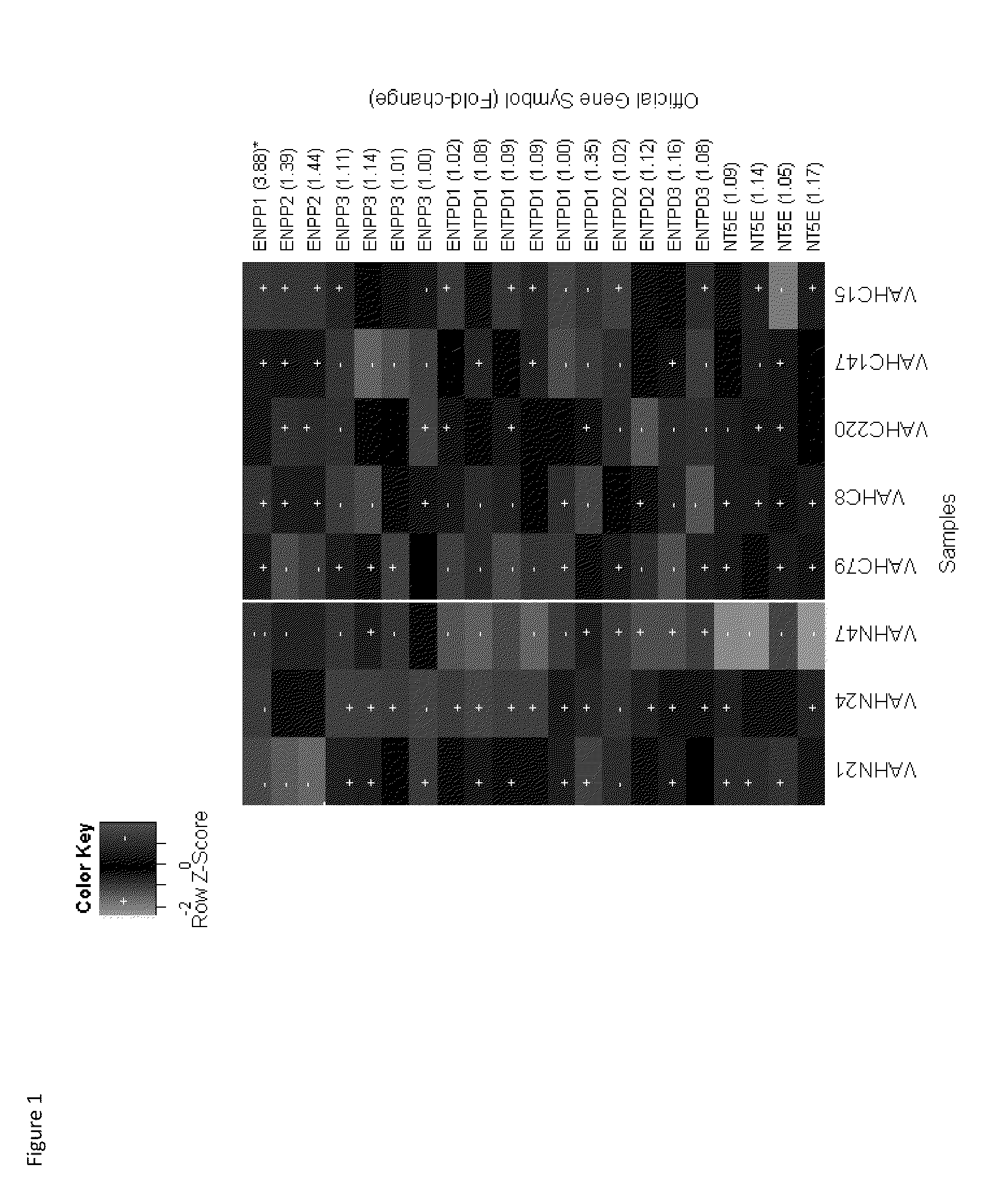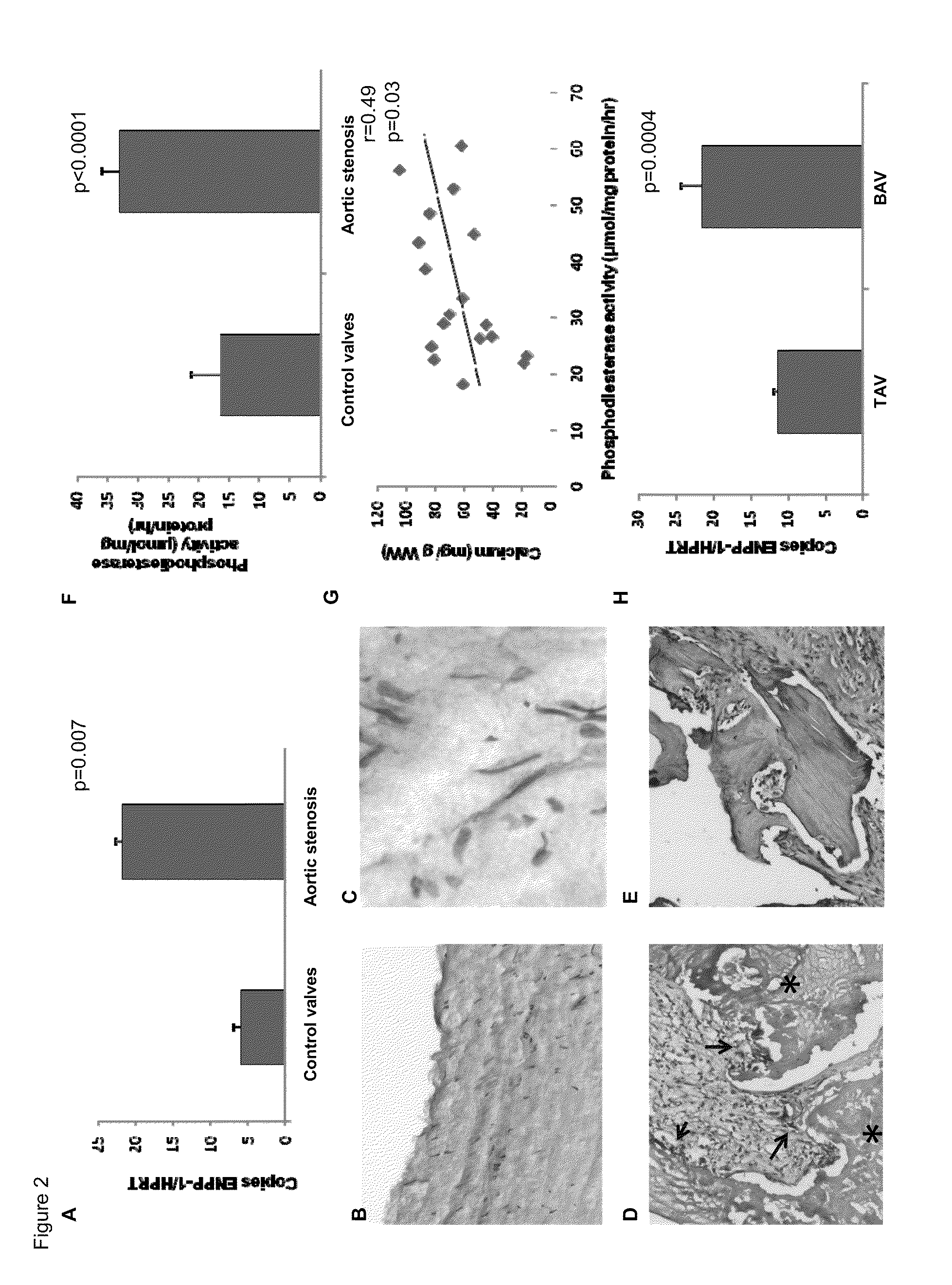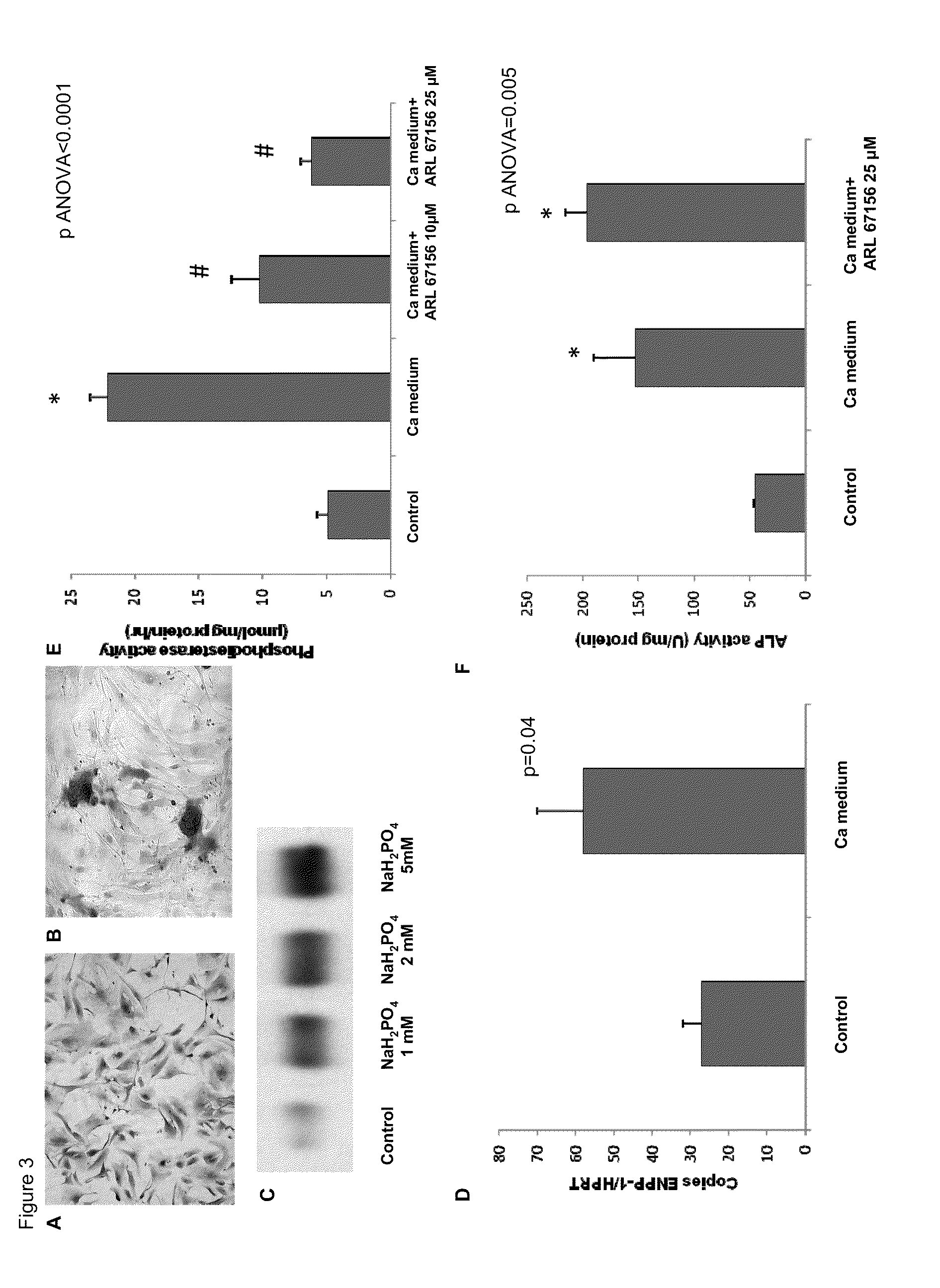Ectonucleotidase pyrophosphate/phosphodiesterase-1 (enpp-1) as a target for the treatment of aortic valve stenosis and cardiovascular calcification
a technology of ectonucleotidase and phosphodiesterase, which is applied in the field of treatment and/or prevention of aortic valve stenosis (avs) and cardiovascular calcification, can solve the problems of no medical treatment available to prevent the development and progression, and achieve the effect of high magnitude of calcification and elevated expression of enpp-1
- Summary
- Abstract
- Description
- Claims
- Application Information
AI Technical Summary
Benefits of technology
Problems solved by technology
Method used
Image
Examples
example 1
Materials and Methods
Patients and Tissue Collection
[0037]We examined 87 aortic valves explanted from patients who underwent aortic valve replacement for calcific AVS. Fourteen aortic valves with normal morphology and function, as documented by Doppler-echocardiography, were obtained from patients undergoing a heart transplantation procedure and used as controls. The protocol was approved by local ethical committee and informed consent was obtained from the subjects. All patients had moderate to severe AVS and less than mild aortic regurgitation. Patients with a history of rheumatic disease, endocarditis or an inflammatory disorder were excluded. Samples were taken at the time of surgery. Two cusps were snap frozen in liquid nitrogen for ulterior quantification of calcium content, protein isolation, and RNA isolation for ulterior quantitative PCR (q-PCR) analyses. One cusp was decalcified in Cal-Ex™ (Fisher, Ottawa, Canada) for 24 hours and then one segment was fixed in formaldehyde ...
example 2
Expression of Ectonucleotidases in Aortic Valves
[0048]A tissue-based microarray experiment was first conducted to explore the gene expression pattern of different ectonucleotidases on human aortic valves explanted from patients with or without AS. Five calcified AS valves and 5 control valves without any signs of calcification or dysfunction were selected for the microarray experiment. Cases and controls were Caucasian males without renal failure, matched for age and body mass index. Only tricuspid valves were used. Two control valves failed quality control and were discarded from subsequent analyses. The microarray results for key enzymes regulating the Pi / PPi ratio are presented in FIG. 1. The heat map illustrates the normalized expression values for each sample. A total of 21 probe sets were available to study the expression of 7 relevant enzymes: ENPP (1-2-3), ENTPD (1-2-3), and NT5E. The ENPP1 mRNA transcript was increased by 3.9-fold in AS compared to control valves. None of t...
example 3
Clinical Factors Associated with ENPP-1 Expression in Aortic Stenosis Valves
[0050]Among the different clinical factors, we found that bicuspid valves had markedly higher level of ENPP-1 copies when compared to tricuspid valves (p=0.0004) (FIG. 2H). In addition, we documented a significant and positive correlation between the diastolic blood pressure and the number of ENPP-1 copies (r=0.34; p=0.001) (FIG. 7A). Among the other factors, we have also documented that the number of ENPP-1 copies were significantly lower in patient taking angiotensin receptor blockers (ARBs) medication (p=0.04) (FIG. 7B). However, patients under angiotensin converting enzyme inhibitors (ACE inhibitors) treatment had similar number of ENPP-1 copies compared to subjects not taking this medication. On linear multivariate regression model, after adjustment for age, gender, and ARBs medication, we found that only diastolic blood pressure (p=0.02) and bicuspid valves (p=0.03) were independently related to the am...
PUM
 Login to View More
Login to View More Abstract
Description
Claims
Application Information
 Login to View More
Login to View More - R&D
- Intellectual Property
- Life Sciences
- Materials
- Tech Scout
- Unparalleled Data Quality
- Higher Quality Content
- 60% Fewer Hallucinations
Browse by: Latest US Patents, China's latest patents, Technical Efficacy Thesaurus, Application Domain, Technology Topic, Popular Technical Reports.
© 2025 PatSnap. All rights reserved.Legal|Privacy policy|Modern Slavery Act Transparency Statement|Sitemap|About US| Contact US: help@patsnap.com



